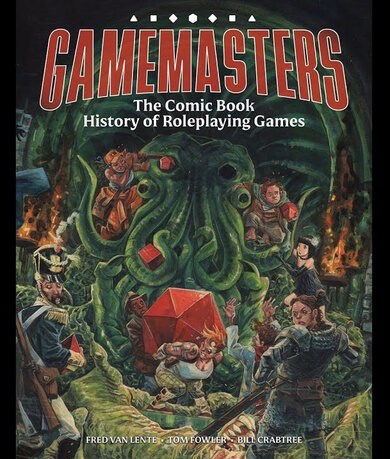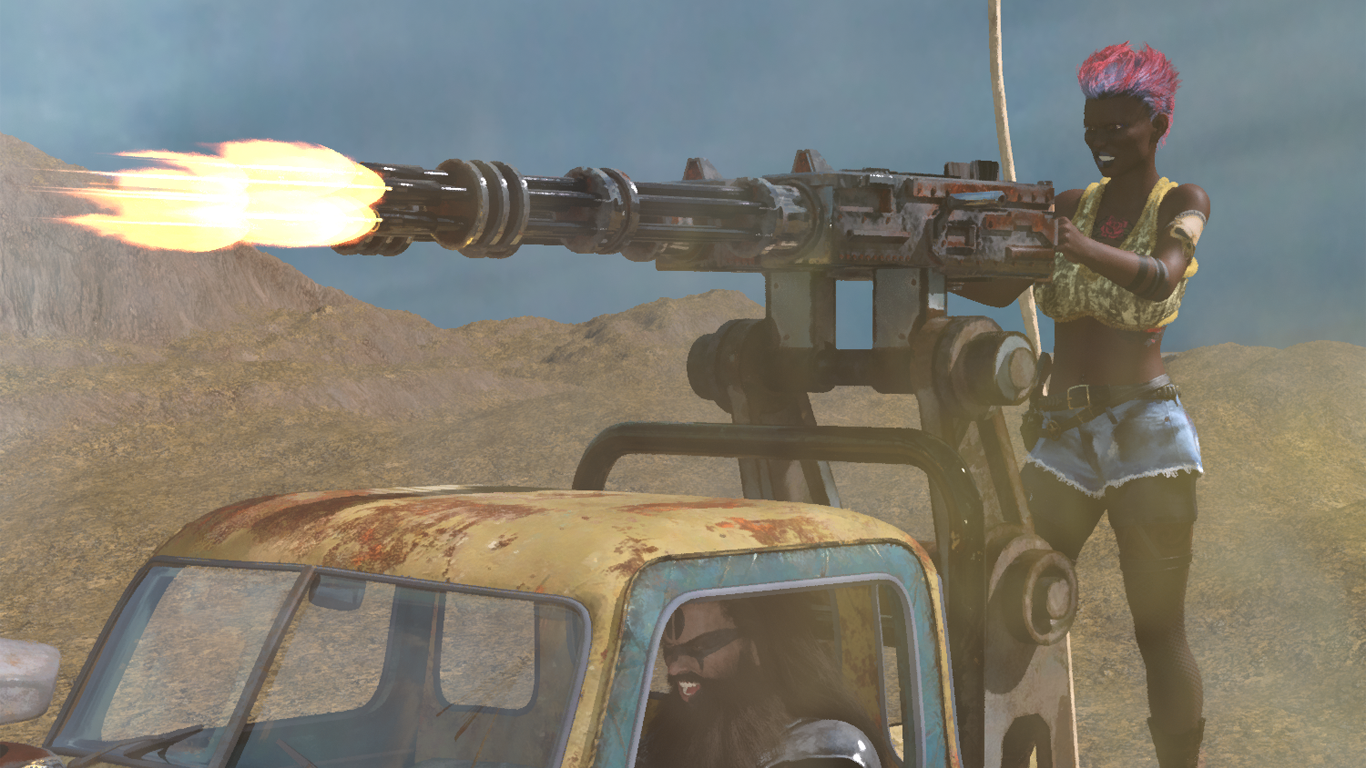We may earn money or products from the companies mentioned in this post.
I rarely do very much planning for the games I run. One of the benefits of using a rules-light system is that it’s easy to make things up on the spot, so I don’t see the point of spending a lot of time drawing maps and looking up stat blocks that might or might not get used. That doesn’t mean I improvise everything, just that I try to keep my plot ideas as open as possible so the players have plenty of room to make their own decisions. What kind of planning I do depends largely on what kind of game I’m going to run. Since a depressingly high percentage of games I run are convention demos, most of them fall into five broad categories for planning purposes.
Genre Demos
These are games where the basic premise is just a genre, like “Sword & Sorcery” or “Super-Heroes.” I usually run genre demos either because I want to show players how QAGS can be used for the genre or because when I’m coming up with games for the convention I think “I’d like to run a [genre] game.” Since I tend to run genres I’m familiar with, I usually just think of a conflict, often a specific bad guy with some kind of scheme (“Anathema The Dark is trying to steal the Cauldron of Despair to raise a zombie army”) and rely on genre conventions to get the players caught up in it. I might also think about a few scenes, locations, or supporting characters that are likely to show up or that I’d like to use, but I rarely try to plot out exactly where and how they’ll appear in the game.
Setting Demos
Setting demos are games I’m running to try to get someone interested enough in a setting to buy the book or PDF. For obvious reasons, these make up the majority of my convention games. Nine times out of ten, the game description in the program is generic, so I’m not locked into a particular plotline. In that case, I usually have an idea of which existing scenario I can use (“seems like a Sharkcano kind of day”) or a vague plot idea similar to the ones I come up with for genre demos (“I’ll have them go up against Al Capone’s voodoo master”), but those are just back-ups. I prefer to rely on setting knowledge to build a plot around the characters that the players create at the table whenever possible. For example, a couple of years ago at GenCon I was running a generic M-Force game and went in with the fallback of “I’ll throw some goblins their way and let them track down a massive nest.” When the players decided they wanted to be members of the Honolulu field office, the goblins got tossed out for a plot about a secessionist cult who used a magical tiki mask to command native monsters to carry out a political murder, then summoned a volcano god. The goblins would have worked fine, but the plot probably wouldn’t have been resolved in part by PCs doing “white hula magic” to counter “The Hula of the Damned.” In addition to having a plot I can use, I also go into setting demos with a mental list of setting-specific tropes that I want to try to include, either because they show off the setting particularly well or because I just happen to like them.
Mystery/Investigation Scenarios
These generally fall into another category as well, but if you write up a con blurb that promises a mystery, making it up as you go along won’t cut it. At the very least, you have to go into the game knowing what the mystery and the solution. For example, if you’re running a murder mystery, you need to know who’s dead, who killed them, and why. You might be able to create the clues based on player actions with just that, but it’s best to have at least a few big clues in advance, along with likely ways the characters can find them. The key is to make sure you don’t create a mystery that requires the players to follow a specific flowchart to reach a solution. Wherever possible, make sure there are several different sources characters can use to arrive at key information. Getting the PCs involved isn’t usually an issue, since most mysteries are either “mission” type games where solving the mystery is the characters’ job (a private detective or CSI game) or “bottle” games where the characters have little choice but to solve the mystery, either because there’s really nothing else to do or to save their own skin (the standard “how to host a murder mystery” set-up).
Character Driven Games
When it comes to conventions, character-driven games require pre-generated characters. Otherwise you’re basing your whole game premise on the hope that the players will create interesting characters with their own plot hooks and that you’ll be able to improvise a game based on those plot hooks. This does happen from time to time, but not often enough for it to be a safe bet. Most of the character-driven games I run are based on pop-culture, either as direct adaptations of some book, movie, or TV show, or as a mash-up of two franchises. The most important aspect of preparing for this kind of game is to make sure that the characters are designed with built-in plots and reasons to pursue them. You’ll probably also want to think about some likely scenes that will give each of the characters a chance to be in the spotlight, along with possible stories that can lead to those scenes. The amount of plot planning required depends a lot on the premise. My usual plot outline for “Muppets of Sherwood” is along the lines of “Sheriff is up to something dastardly; NPC merry muppets will get captured and possibly nearly hung; make sure Gonzo gets a chance to do crazy stunts and Kermit Hood has plenty of opportunities for swashbuckling and sharpshooting.” On the other hand, running “Lock, Stock, and Two Ruby Slippers” for the first time required very detailed (for me) planning because the concept needed to at least somewhat adhere to the Wizard of Oz story structure. So in addition to translating Dorothy, Tin Man, and the others to the modern-day London crime underground setting and giving them reasons to want to see the Wizard, I had to work out, for example, what “Follow the Yellow Brick Road” would mean in a Guy Ritchie movie.
Note: The characters for both “Muppets of Sherwood” and “Lock, Stock, and Two Ruby Slippers” can be downloaded from the Hex Pre-gen archive.
System Demos
Sometimes I run games like “Players Choice” (the players choose what genre they want, roll up characters, and the GM runs it) and “Life is Random” (the premise of the game is generated randomly using The Book of Dumb Tables or The Book of Dumb Tables 2). The whole purpose of these games is to show off the versatility of the QAGS system. Since by design it’s impossible to plan them, those succeed or fail entirely based on the ability of the GM (and players) to improvise. The only time the GM has to plan is while the players are making characters, and usually at that point you’ve just got the genre or setting to go on. I spend that time trying to come up with a good conflict or villain, but also trying to think of what parts of that genre the system can handle especially well so that I can try to include ways to highlight how well the system works for that particular situation.
And When I’m Not Running A One-Shot…
When I actually get to run a campaign outside of a convention, I combine all these plotting schemes as needed, but for an overall storyline I usually rely on knowing what’s going on in the world independent of the PCs. If you’ve got a world where lots of different characters and factions have their own agendas, and those agendas intersect with one another or the goals of the characters, the adventures basically write themselves. I usually also come up with ideas for a few generic stand-alone adventures/encounters (for example, a haunted house to investigate or highwaymen attacking people along the roadway) that I can drop in when things get bogged down or I feel like players need a break from the ongoing story.
Unless you’re running a dungeon crawl or railroading the players, or are lucky enough to players who can generate character-driven plots that you just have to flesh out as the game goes along, you’re going to have to do some planning. Most people probably plan more than I do, but if you want to keep the game open-ended, it’s still important to think about what you’re trying to do in the game and plan the things you need to get the point across.





